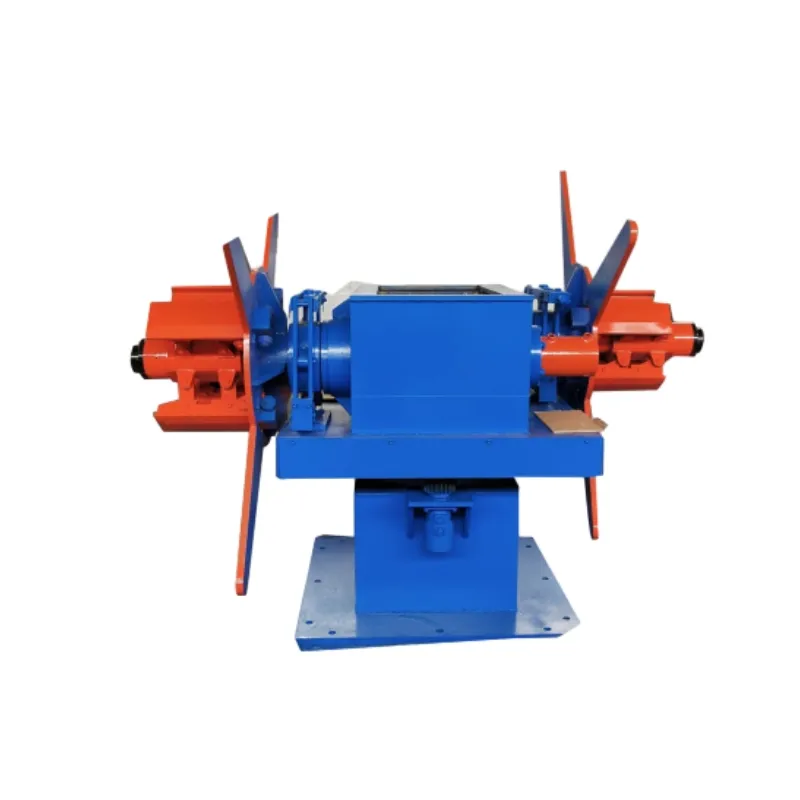Advanced Flying Shear Roll Forming Equipment for Precise Metal Fabrication and Production
The Flying Shear Roll Forming Machine Revolutionizing Metal Fabrication
In the realm of metal fabrication, efficiency and precision are paramount. Among the innovative tools that have emerged to meet these demands is the flying shear roll forming machine. This sophisticated piece of equipment combines the principles of roll forming with a cutting mechanism that enhances production capabilities, particularly suited for high-speed industrial applications.
Understanding Roll Forming
Roll forming is a continuous bending operation where a long strip of metal is passed through a series of rollers that progressively shape the material into the desired cross-section. This technique is widely adopted for creating various profiles, including channel sections, C-beams, and Z-purlins, used in construction and manufacturing industries. However, traditional roll forming methods often face limitations when it comes to cutting the produced lengths effectively and efficiently. This is where the flying shear roll forming machine steps in.
The Mechanism of Flying Shear
The flying shear system operates on a principle that allows for cutting the metal strip while it is still moving through the forming process. As the roll forming machine shapes the metal, the flying shear is synchronized with the production speed, ensuring that cuts are made as required without disrupting the flow of materials. Unlike static shear systems, which pause the process to perform cuts, the flying shear effectively maintains the momentum, significantly increasing overall production speed.
Advantages of Flying Shear Roll Forming Machines
1. Increased Production Speed One of the standout benefits of flying shear technology is the reduction in downtime. Traditional cutting operations can slow production, but with a flying shear, metal components are cut in real-time, enhancing throughput without sacrificing quality.
flying shear roll forming machine

2. Precision Cutting The synchronization of the shear with the roll forming process allows for high precision in cuts, ensuring that the lengths of the profiles are accurate to specifications. This precision is critical in industries where tolerances are tight, such as automotive and aerospace manufacturing.
3. Versatility Flying shear roll forming machines can accommodate a vast range of materials, including steel, aluminum, and other alloys. This adaptability makes them suitable for a variety of applications, from structural components to intricate parts.
4. Reduced Material Waste Efficient cutting also means less scrap material. By optimizing the cutting process, manufacturers can minimize waste, contributing to a more sustainable production model.
5. Cost Effectiveness While the initial investment in a flying shear roll forming machine may be higher than traditional methods, the reduction in labor costs, increased efficiency, and lower operational expenses typically result in a favorable return on investment over time.
Applications in Various Industries
The utility of flying shear roll forming machines spans several sectors. In construction, they are utilized to produce steel framing, roofing panels, and various structural components. In the automotive sector, manufacturers rely on these machines for precision parts that require stringent quality controls. Moreover, the appliance and furniture industries benefit from customized profiles made possible by this technology.
Conclusion
The flying shear roll forming machine represents a significant advancement in metal fabrication technology. By merging the roll forming process with a dynamic cutting system, it addresses many of the challenges faced by manufacturers in today's fast-paced environment. As industries continue to seek ways to improve efficiency, reduce costs, and maintain quality, the flying shear roll forming machine stands out as a technology that meets and exceeds these demands, paving the way for a more productive future in metalworking.
-
3-in-1 Shear Press Brake & Slip Roll 30 Ton Metal Fabrication ToolNewsMay.25,2025
-
Wood & Sheet Metal Straightener Machines High-Efficiency ToolsNewsMay.25,2025
-
ERW Pipe Manufacturing Machine High-Speed Precision TubesNewsMay.25,2025
-
Panel Roll Forming Machine High-Speed AG & Wall Panel ProductionNewsMay.24,2025
-
Roller Shutter Door Making Machine High-Speed & Precision DesignNewsMay.24,2025
-
High-Precision Shutter Plate Making Machine Steel Flattening & Hydraulic Cutting SolutionsNewsMay.23,2025


